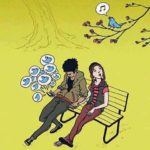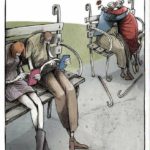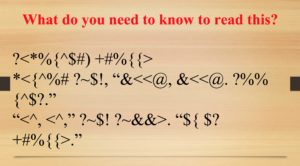By Claire Corbeaux, Elizabeth Gellman, Anthony Lyon, Hannah Nicchi, and Avery Padula
The objective of our final group project was to add a text by Henry David Thoreau to The Readers’ Thoreau, a site with which we have been working all semester. Once this text was chosen and uploaded, we were to add informative and interpretive comments to the site. When we began researching Thoreau texts to work with, we knew we wanted to choose a text that related to some of the course themes that we had been discussing. We also knew we didn’t want to choose a text that was very long because we wanted to be able to thoroughly analyze the one we picked in the time we had. We stumbled upon
Paradise (to be) Regained, a book review by Thoreau on J.A. Etzler’s
The Paradise within the Reach of all Men, without Labor, by Powers of Nature and Machinery. An Address to all intelligent Men. In two parts. Upon reading it, we decided that it was a good text to pick because it corresponded to many of the discussions we had in class throughout the semester about technology and humankind’s relationship with it.
Thoreau finds Etzler’s book problematic because of Etzler’s ideas that technology can allow humans do develop a paradise wherein they do not need to labor in order to live in “all imaginable refinements of luxury” (Etzler 19). Thoreau’s skepticism of Etzler’s plans for technological improvement to revolutionize the world is evident throughout “Paradise (to be) Regained”. His distrust of certain elements of technology, as well as his distrust of its ability to improve human quality of life, is also reflected in
Walden, wherein Thoreau criticizes civilization for focusing on improving technology at the expense of the spiritual, personal advancement of all of humankind. For example, he writes in his “Economy” chapter of
Walden, “We are in great haste to construct a magnetic telegraph from Maine to Texas; but Maine and Texas, it may be, have nothing important to communicate” (73). This represents the same brand of skepticism Thoreau harbored in his analysis of Etzler’s book, found in “Paradise (to be) Regained”.
After settling on this text, we searched for a plain text version of “Paradise (to be) Regained” to upload to The Readers’ Thoreau. We were able to find one on The Anarchist Library website. We then imported the text into Atom, an open-source text and source-code editor. Working in Atom allowed us to “clean up” the text, which involved removing “curly” quotation marks and replacing them with “straight” quotation marks and comma. This practice was made easier by using the find and replace function. We also removed all formatting and styling from the Anarchist Library version. Claire and Lizzie visited Dr. Schacht in his office hours to work on cleaning the text, and Claire wrote the Greek characters Thoreau includes in “Paradise (to be) Regained” in HTML. Another way we cleaned up the text with Atom was by formatting the block quotes in Thoreau’s review correctly, using the span tag and “blockquote-in-para” to format them.
The addition of the Greek characters and the use of the “blockquote-in-para” represented challenges that our group had to overcome. Claire had to crosscheck many different sources from the internet in order to uncover which codes could create which Greek letters. Additionally, the Anarchist Library digital text featured Greek characters with unusual accents added on certain Greek letters. However, research showed to Claire that these accents must have been a mistake, as there were no existing codes for several of the combinations of Greek letter and accent that the Anarchist Library featured. Another such challenge that occurred while we were trying to clean the text was that of the “blockquote-in-para.” Using this class within the span tag proved a challenge because it had to be formatted in a very particular way to ensure that a new paragraph was or was not created by the blockquote. As was explained to Claire by Dr. Schacht, if the blockquote was not to form a new paragraph, no space was added between the preceding text and the span tag.
There were a few other challenges our group faced while working on this project. For example, we were unable to upload the text to The Reader’s Thoreau at first because we were not allowed access. This problem was solved when Dr. Schacht allowed Claire authorial access to upload the text to the site. Prior to this change, Claire had uploaded the text in the proper and agreed upon paragraph increments as blog posts such that we had a template to follow when it came time to actually upload our text as pages. Another problem we encountered was that once the text was uploaded, we experienced a brief moment where we were unable to post comments to the text. However, Claire was able to solve this by inspecting the sidebar menu latent within the WordPress page adding editor and realizing that there was an option under the “Discussion” tab that could be selected or deselected to allow or disallow commenting. Also, while uploading the text and turning it from blog posts into actual pages, the order of the pages became jumbled; however, this crisis was solved when Claire figured out that the order of the pages of text on a site could be altered simply by clicking and dragging.
Once the text was cleaned up using Atom, we set about comparing it to the scholarly text. Lizzie found the Milne Library text of “Paradise (to be) Regained,” which was in
The Writings of Henry D. Thoreau, edited by Wendell Glick. We compared the physical text to the digital text we had found, seeing if there were any differences or discrepancies. Lizzie, Avery, and Hannah all read through both texts to look for differences. We found very few: on the first page of the physical text, there was a footnote that Glick added to the title “Paradise (to be) Regained,” which read “The Paradise within the Reach of all Men, without Labor, by Powers of Nature and Machinery. An Address to all intelligent Men. In two parts. By J.A. Etzler. Part First. Second English Edition. Pp. 55. London, 1842” (19). The other difference we found was that in the Milne library version, the word “alas” was followed by a comma, while in the Anarchist Library version, it was followed by an exclamation point.
Once this step was completed, Claire gained authorial access from Dr. Schacht to upload the text to The Reader’s Thoreau. We used the cleaned up version we completed in Atom, and added the footnote from the Milne Library version of the text, as it seemed important information to include. She was able to delete the blog post placeholders and add pages to the Paradise (to be) Regained site in the same paragraph distribution, except instead of individual posts, each page had the desired amount of paragraphs. We were then all able to add comments to the text on the Readers’ Thoreau website, which we each did at least two of. This was an interesting process because we were able to show how our previous knowledge of Thoreau’s beliefs and texts connected with our reading of “Paradise (to be) Regained.” Anthony, in particular, applied himself to the commenting process and sought to make explicit connections between “Paradise (to be) Regained and
Walden in his commenting.
Overall, this project was a great learning experience that really summed up everything we have learned in Dr. Schacht’s class. We were able to learn, not only about the technology we interacted with, but about Thoreau, and ourselves, as well. We experienced firsthand the power and the limitations of the technological tools we worked with. For example, while Atom was extremely useful to us while we were cleaning our text, particularly, through the find and replace function, it is not without its limitations. Most notably, working in Atom meant we couldn’t work collaboratively, so one person had to do much of the cleaning. Additionally, that person had to also know what they were doing, since, while working in Atom, there is no way to tell what it will look like in the Readers’ Thoreau, despite the help that the Markdown preview toggle option provides. We also learned about the power of WordPress and experienced this power first hand when granted authorial access. Claire was able to add pages, change their order, and dictate whether or not comments were allowed. Of course, WordPress also has its limitations, as it is not always very clear or obvious with its layout or formatting. It is for this reason that it is easy to make mistakes and not realize or be confused as to where certain functions or operations, such as the comment option, reside.
Lastly, we learned about Thoreau and cemented our perceptions of him, perceptions that many of us first formed while reading
Walden. Where
Walden saw Thoreau express his deep awe and partial distrust of certain aspects of technology, “Paradise (To Be) Regained” truly demonstrates Thoreau’s understanding of technology, but also his promotion of nature and the human spirit over technology. Indeed, in his essay, Thoreau condemns Etzler for trying to usher in a paradise on Earth through technology when humankind is itself so imperfect. Rather than control nature, Thoreau encourages humanity to understand nature and themselves in a more holistic, spiritual manner. Additionally, Thoreau analyzing humankind’s relationship with technology made us consider our own relationship to the technology of our day, whether we control it or if it controls us, whether it makes our lives paradisiacal or hellish, conversations we have been having consistently throughout the semester. Finally, we realized that Thoreau, despite living almost 200 years ago, was not so unlike us. Indeed, Thoreau wrote critical essays reviewing the works of others, just as many of us have done this past semester in some of our classes. And, just like us, Thoreau lived in a changing world that presented its inhabitants with a great deal of uncertainty, yet, like Thoreau, we must remember to live deliberately.







